
Summary
If you are Roan Antelope Hunting, do not be under-gunned; the roan is a heavy, tough, aggressive, and potentially dangerous game hunt.
The herd bulls can be pretty cocky and not all that hard to approach.
Be cautious and ready on this African hunt; he may be bold enough to take you on in a charge.
Roan hunting has no seasonal restrictions in the Eastern Cape of South Africa.
Nick Bowker Hunting offers African Roan hunting year-round.
Hunters will based at Hopewell Lodge in South Africa for your Roan hunt.
Hunt African Roan in various habitats, including woodlands, plains, and savanna.
Join us for memorable African hunting safaris.
Table of Contents
Roan Antelope Hunting Trophy Fees -2025
The average price of a trophy game Roan Antelope hunt is $7000. Roan can be added to any of our South African safari hunt packages.
Our Roan price for 2025 is $7000.
The Roan Antelope trophy hunting package includes a licensed hunting guide, a hunting license, and all permits.
Hunting Roan Antelope – South Africa
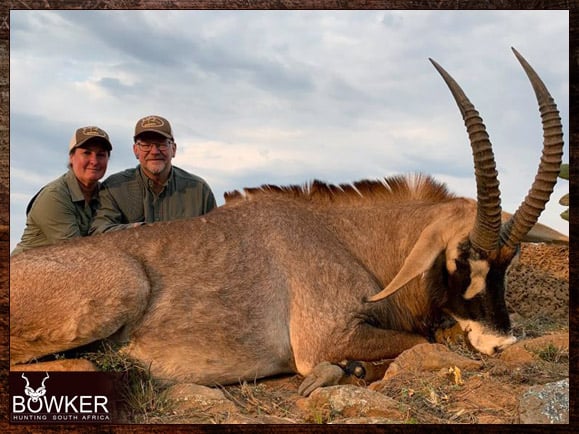
Shot placement must be in the bottom third of the animal directly above the front shoulder. This will ensure a heart or lung shot. Avoid head and neck shots, which are high-risk when hunting Roan.
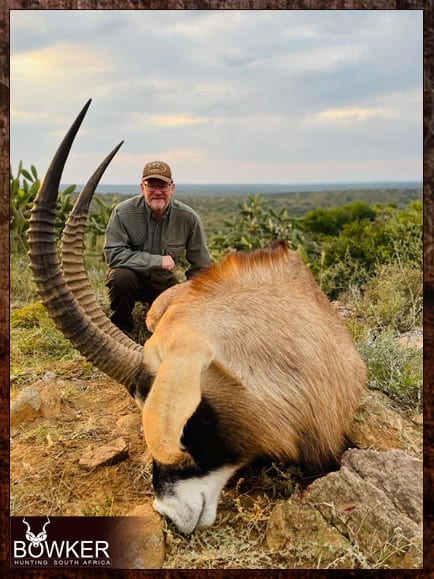
Your roan antelope trophy should have an average shoulder height of around 52 inches, weigh about 600 pounds, and have a Horn Length of approximately 25 inches.
The Safari Club International minimum score for a roan is 67. This is measured by adding the length of each horn as well as the circumference of the bases.
Shot placement and rifle caliber are essential for Roan hunts, as roans are large, challenging, and tenacious game animals and a difficult hunting quarry.
Powerful and dangerous antelope, some contests can end in a fatality if neither bull chooses to give up.
Roan-like sable is not an indigenous game to the Eastern Cape but has been introduced for hunting.
Hunters can be injured if they close to the backward sweep of the roan’s horns while game hunting Roan.
South Africa provides cheap hunting safari packages.
Trophy Judgement and Rifle Caliber for Hunts
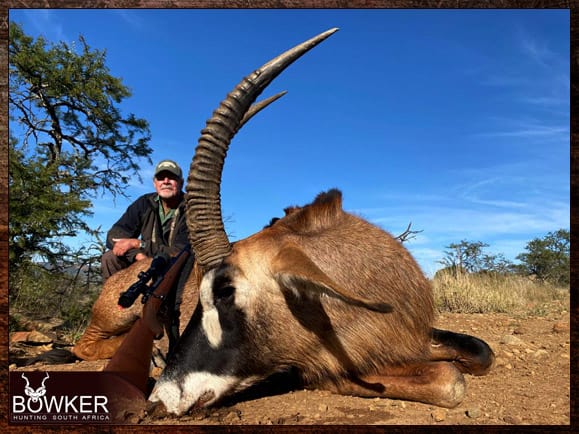
The herd bulls can be pretty cocky and not all that hard to approach. Be cautious when hunting Roan; he may be bold enough to take you on in a charge.
Like sable, we would recommend the 300 magnums for roan hunting.
Look for his spoor around the water holes and catch him at first light while he is feeding in the open while hunting.
Predominantly grazers, the roan game prefers savannas with wide, open, grassy areas where they tend to scatter and feed.
Like most antelope hunting, Hunt Roan in the early mornings and late evenings.
Ringed horns of the roan antelope reach a meter long but are shorter in females. They arch backward slightly in both males and females.
Sometimes confused with sable antelope where their ranges overlap, as roan look similar to a sable.
Sable antelope males are much darker than a roan game and have longer horns.
Found in woodland and grassland savanna, roan feed on mid-length grasses.
Roan form harem groups of 6 to 18 animals with a dominant male.
They fight among themselves to dominate their herd, brandishing their horns while both animals are on their knees.
The Difference Between a Male and Female for your Roan hunt
Both the roan antelope males and females have horns. The male’s horns are longer and heavier.
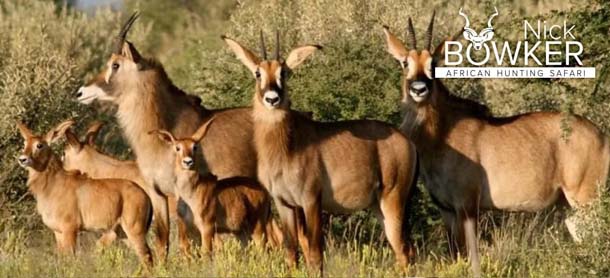
Interesting Facts about Roan for African Game Hunting
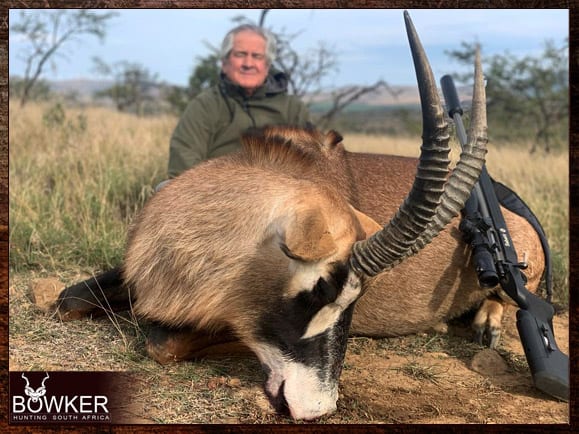
- A grazer and browser whose preferred habitat includes lightly wooded savanna, it also frequents floodplains and grasslands.
- The roan is sociable and territorial; females live in herds of 15 – 25 with their offspring.
- Males defend territories and accompany female herds that range widely, enjoying a monopoly while being the dominant bull.
- The dominant bull forces the young males to leave. The bachelors associate together in small bachelor herds until they mature at six years of age.
- Females breed at two years and thereafter produce young at roughly 10.5-month intervals (gestation 9 – 9.5 months).
- After a 2 – 3 week hiding stage, calves join the maternal herd, associating with other juveniles in creches.
- Resting juvenile subgroups are often left behind when the rest of the herd moves, making them vulnerable prey for leopards.
- Roan can kill hunting lions that fail to overpower them immediately. With an aggressive temperament, their curved horns and a sideways stabbing technique make the roan antelope formidable.
- Roan hunting is now much more affordable than in days gone by. Roan can now be added to our seven animal hunting packages, including trophies such as nyala, zebra, and black wildebeest.
About Roan Antelope in Africa for Hunters
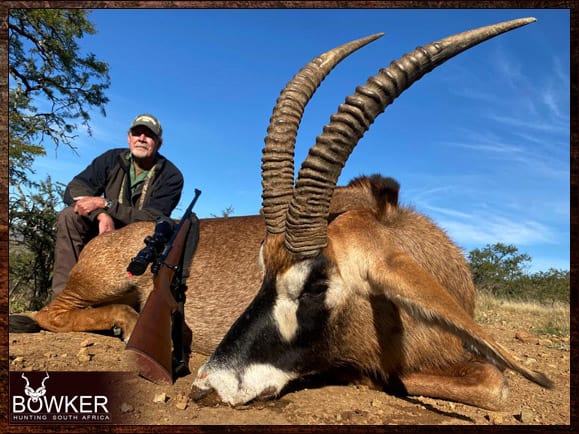
Roan hunting – one of the largest antelope species, only the Eland, is larger. Male Kudu can exceed them in weight.
They measure 75 – 94 inches from the head to the base of the tail, and the tail measures 15 – 19 inches.
The body mass of males is 550 – 650 pounds, and the females are 500 – 600 pounds. The shoulder of this species is typically around 51 – 55 inches.
Named for their roan color (a reddish-brown), they have lighter underbellies, white eyebrows and cheeks, and black faces, lighter in females.
They have short, erect manes, very light beards, and prominent red nostrils.
Ringed horns of the roan antelope reach a meter long but are shorter in females. They arch backward slightly in both males and females.
Sometimes confused with sable antelope where their ranges overlap, as roan look similar to sable antelope.
Sable antelope males are much darker than roan and have shorter horns.
Found in woodland and grassland savanna, roan feed on mid-length grasses.
Roan form harem groups of 6 to 18 animals with a dominant male.
They fight among themselves to dominate their herd, brandishing their horns while both animals are on their knees.